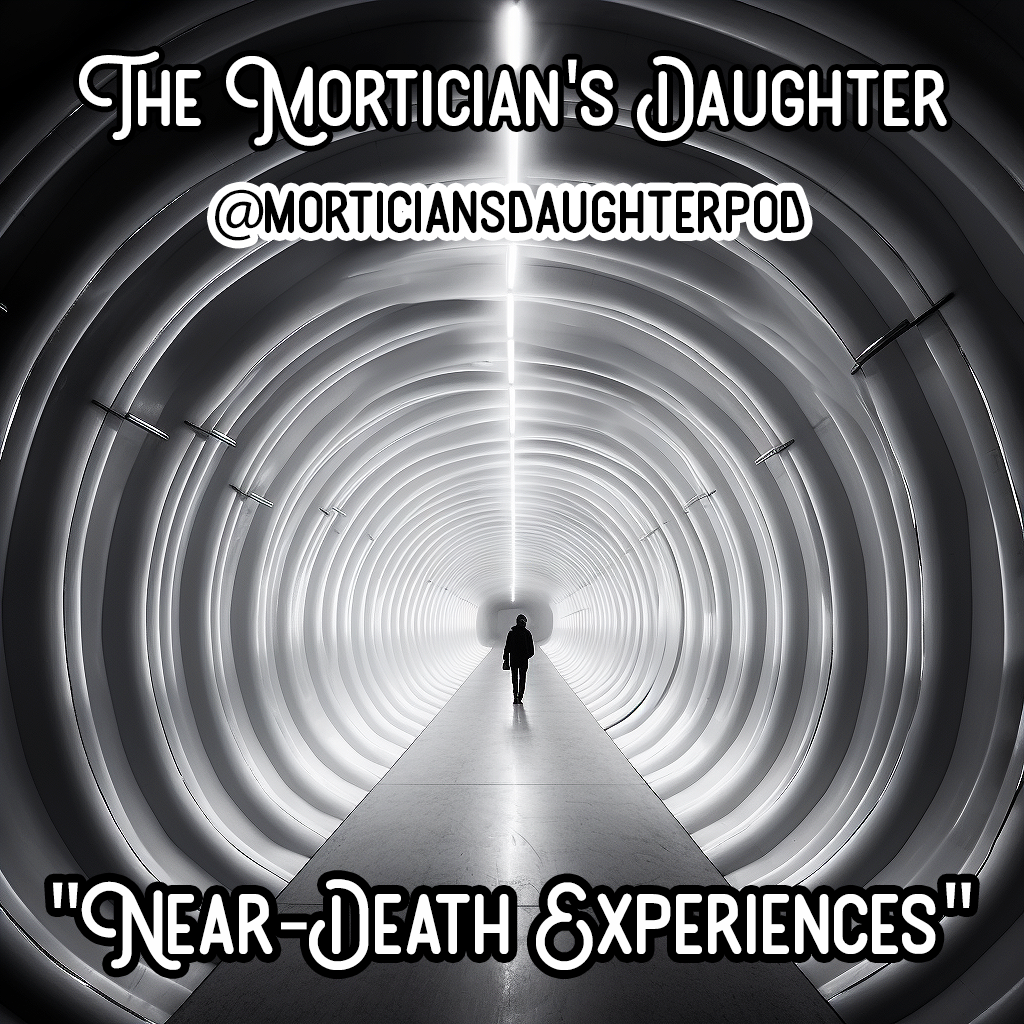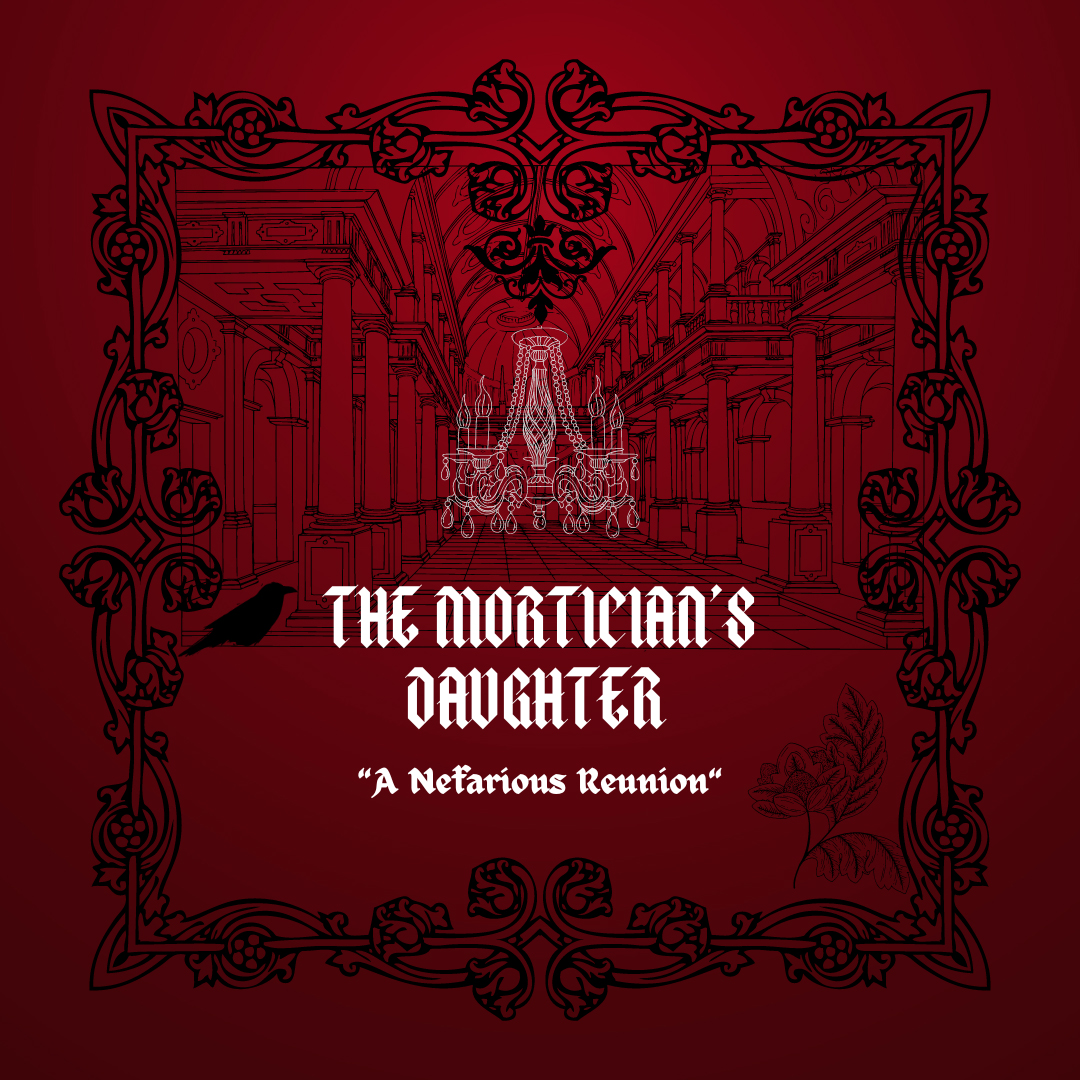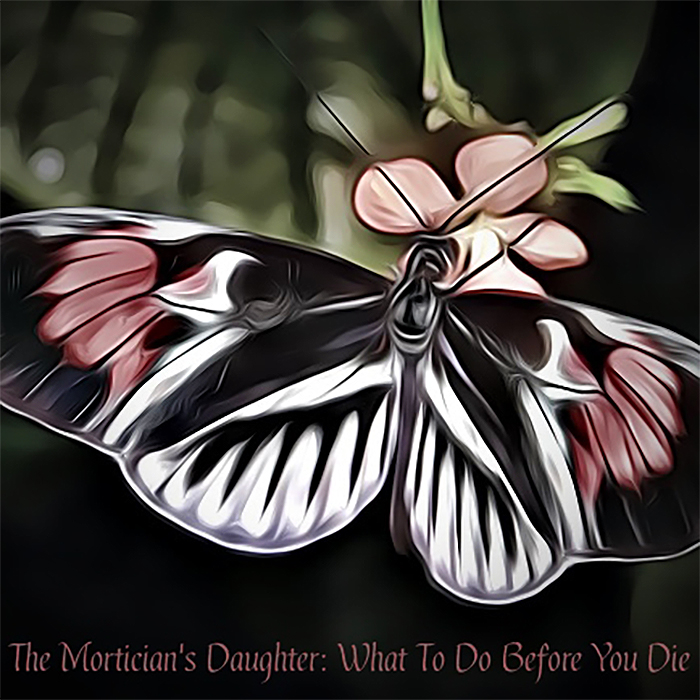Episode Transcript
TMD 001: Begin with the End
Good day to all you deviant darlings out there. I am the mortician’s daughter and I’m here to serve up a monthly meditation on the macabre so welcome to our inaugural episode.
There are so many topics that I’d like to touch upon over the course of this podcast, but I’m always open to new suggestions so don’t hesitate to reach out to me online if there’s something you’d like us to explore. You can find me on facebook at @TMDshow or on twitter @DeathGrrrrl - and there’s no “i” but four Rs so put the grrrr in girl.
Now, to kick things off, I thought I should tell you a little bit about myself. I’m a writer, radio show host, and entrepreneur in the sunny Sonoran Desert and, yes, my father was a mortician… as well as a funeral director, a coroner, an avid reader of great novels and grocery store thrillers alke, and persistent teller of Dad jokes. He passed away when I was a teenager but his legacy has lived on.
The family is still in the industry these days, but my own interest in the subject is far more than occupational. I hold a master’s degree in philosophy and religion and a penchant for reading that I acquired from my father along with my dark hair and dark sense of humor. I’m interested in the idea of consciousness and its possible continuation or eventual cessation. I’m interested in the ways different people approach the subject of death. The stories they tell and the ones they create to address their apprehensions and fears about our final moments, as well as the beliefs they hold about what comes after.
And my interest extends beyond DEATH as a concept to a fascination with the strange and sometimes morbid in all areas of life. Perhaps it arose in me simply in response to other people’s aversion. They way they tensed when I talked about the family business or my father’s profession.
Or maybe it’s just because I always thought knowing about something was better than not knowing. And that base philosophy has led me to take a long look at many unpleasant topics when others might have shied away from further study. Of course, I’m talking about parasitic worms and flesh-eating bacteria. About graveyards and ghosts and homeschooled taxidermists of the Old South.
Basically, I want to know about it all.
Well, that’s enough vague information about me and my background to get us rolling. I thought we could kick things off with the stages of death which is often mistakenly called the stages of rigor mortis. But, actually, rigor mortis refers only to the stiffening of the body’s limbs and is not to be confused with pallor mortis, livor mortis, or, of course, algor mortis. More on that to come.
Back to the stages of death, in their proper order. First, one must transition from living to not living. Or, in other words, you have to die. Now, the line between life and death is not what one might call a “clear divide” and I’m not speaking in a spiritual sense, although many would claim an indeterminate border exists there as well. Now, in past generations, most would have agreed that respiratory and cardiac arrest signifies death. In fact, that’s what a coroner will use to cite a time of death. But, for others, death means brain dead.
Determining death can be a bit more difficult than you might expect. An 1868 patent can attest to that. The "Vester Burial Case safety coffin" include such bells and whistles as a ladder and, yes, an actual alarm bell on the surface just in case one was falsely declared dead and buried while still alive.
And don’t start thinking that this concern about mistakenly being declared dead is just another worry of the past centuries like polio or falling victim to a curse. I mean, sure, these are no absolutes so I’m realize that there are some people in this world worried about polio and curses, but the general podcast audience in 21st Century doesn’t find these to be as worrisome as, let’s say, cancer or even traffic.
But, in February of 2014, Mr. Walter Williams of Mississippi was declared dead by Dexter Howard, Holmes County coroner. Having no pulse, Dexter determined Walter to be most decidedly deceased and went about his paperwork before transporting Walter to Porter & Sons Funeral Home in Lexington. But, once at the funeral home, Walter Williams started moving around in the body bag before Porter or his sons started the embalming process. The only explanation Dexter Howard could offer was that a debrillator implanted in Walter's chest jumpstarted his heart while he was inside the body bag. Nevertheless, Howard declared it a miracle which is a pretty bold declaration for someone who had just declared a not-quite-dead man deceased. And, just for a bit of follow up to that story, Walter Williams died again two weeks later and Dexter Howard was once again called in to pronounce him dead.
This isn't the only instance of a person suddenly found very much alive after being declared dead. A woman in Kazan, Russia woke up screaming in an open coffin at her own funeral after purportedly dying a heart attack. This time the woman lived only long enough to be rushed to the hospital and spend 12 minutes in an intensive care unit before she ceased to be once more.
Other stories of the dead not-quite-resurrected can be found all over. From a 91-year-old woman in Poland who was declared dead and woke up 11 hours later and requested pancakes to the 25-year-old man who woke up in a mortuary refrigerator after vodka-fueled bender in a pub that ended in cardiac arrest. And let’s not forget about the drug addict who OD’d and was declared brain dead in 2014 only to wake up on an operating table in a New York hospital, just as the doctors were about to begin harvesting organs.
Checking for a pulse is not always the best means of determining an end-of-life situation is at hand. In fact, “Death is now usually defined as involving “the irreversible cessation of brain-stem function”, but there remain debates within the medical profession as to what exactly death is and what tests should be done to confirm it.”
The sudden, seemingly spontaneous return of life to people previously declared dead is sometimes attributed to something called Lazarus Syndrome. The Lazarus phenomenon, or syndrome, is defined as a delayed return of spontaneous circulation after CPR has ceased. Since the phenomenon was first named within the medical community back in 1982, there have been at least 38 reported cases of this occurrence.
And we haven’t even touched upon conditions that might look like death on the outside, but contain life on the side, like Catalepsy and locked-in syndrome.
Okay, but let’s assume our way past all this. Let’s say we know for certain, no doubt about it, that dude is fucking dead. What comes next in the stages of death? This is where we get to the aforementioned mortises. Mortums? Mortums, right?
Whatever. We start with Pallor Mortis which is a paleness that settles into the flesh about 15-20 minutes after death and is caused when the circulation in the body ceases. Gravity then causes the still blood to sink, which leads us to our next stage…
Livor mortis happens when the blood settles into the lower portion of the body. Now, gravity brings on this stage so if your corpse is laid flat, the blood will sink to your back of your body. If you’re hung upside down, like the Catholics did to their own Saint Paul where St. Paul’s Cathedral stands today, the blood would head toward you head.
Livor mortis and postmortem lividity both refer to the bluish color or bruise-like coloring of the flesh as the blood settles in the body. This stage usually begins 20-30 minutes after death but the discoloration might not be visually apparent for the first couple hours.
This brings us to Algor mortis, algor meaning "Coldness". This is part of the second stage of death which happens as the body temperature adjusts to its surroundings. Without that hot battery beating in your chest and keeping things charge, the body often cools, but as as desert rat, I know that if you die under the open sun here, your algor mortis process will leave you one hot tamale depending on the time of year.
And now we’ve arrived at the famed rigor mortis stage, or the stiffening of the limbs after death, when we can finally enjoy those Weekend at Bernie slapstick moments with our loved ones.
If we want to get specific,, with some help from Wikipedia, this stage is caused by the depleting oxygen used in the making of adenosine triphosphate or ATP. ATP is essential for the breakdown of the actin-myosin cross-bridges required for the relaxation of muscle tissue.
No oxygen, no ATP, no way to break those bridges. This usually starts two and six hours following death. Side note: this information is particularly useful to the meat industry because onset of rigor mortis can affect the tenderness of the meat. I didn’t know that before I start this and, frankly, I am a little grossed out by that particular fact.
Moving along, we finally arrive at decomposition. The breakdown of organic matter, or the decomposition of the human body. No two organisms decompose in the exact same way and there is even a branch of science that studies decomposition known as taphonomy. The word "taphos" being the Greek word for tomb.
Decomposition is a complete process that is generally broken down into five stages of its very own in vertebrate animals. Those stages are fresh, bloat (shudder), active decay, advanced decay, and dry remains.
Well, that’s enough smarty pants science about death for today. For our strange and unusual death this week, I’ll have to keep it brief so I present to you Hans Staininger. In 1567, Hans Staininger, burgomaster of what is now Austria, broke his neck when he tripped on his own beard. The murderous beard measured 4.5 feet and was usually kept rolled up in a leather pouch. I guess he unrolled the beard for a special occasion.
And that, is just the starting point of what I hope will be a very long discussion on the topic demise. Until our next episode, please avoid casting yourself into that unknown abyss before we’ve gathered more information on the subject. I will be back with our next episode “Death by Faerie” - yeah, you heard me right. That shit is cray and I’ll have all the titillating and tawdry details.
Until, my little imps and hellions, I wish you insightful dreams and otherworldly encounters.


